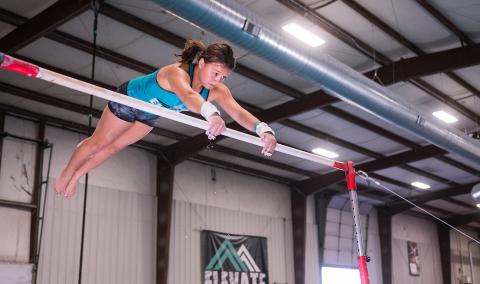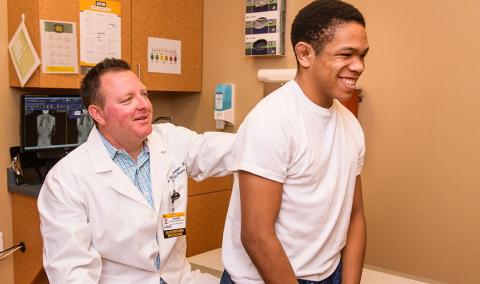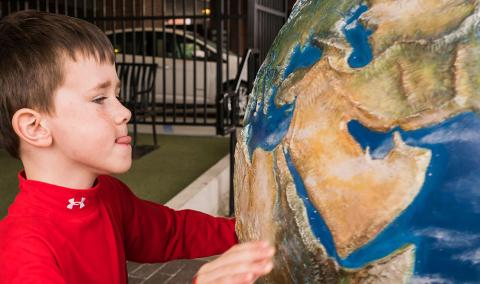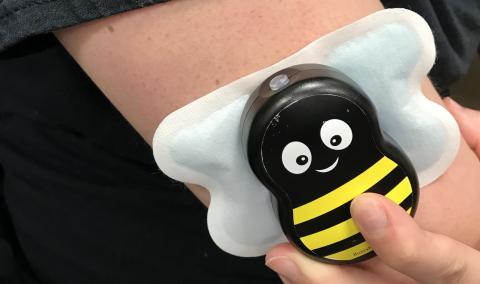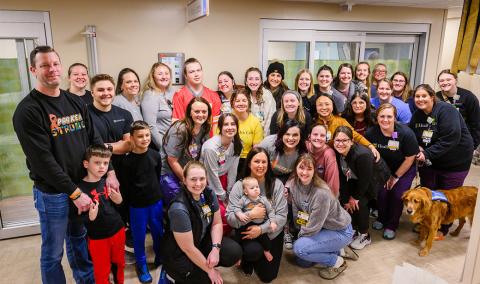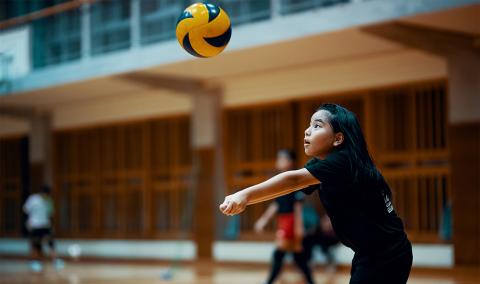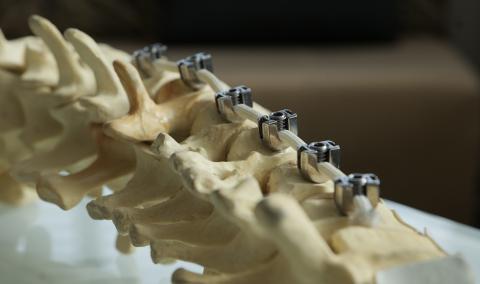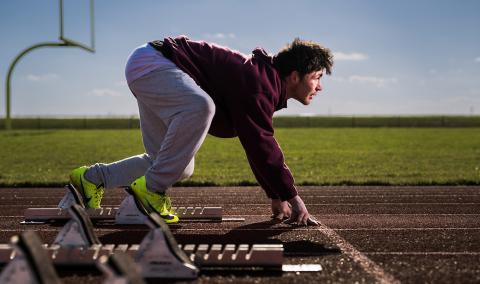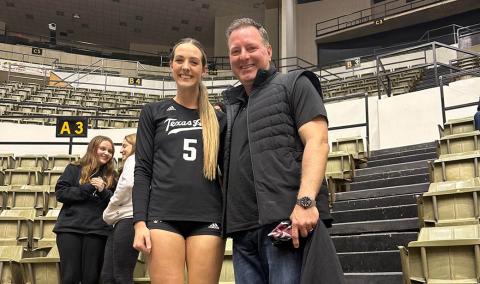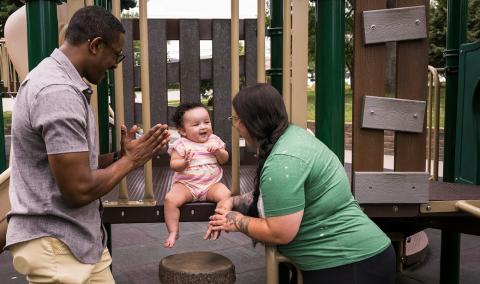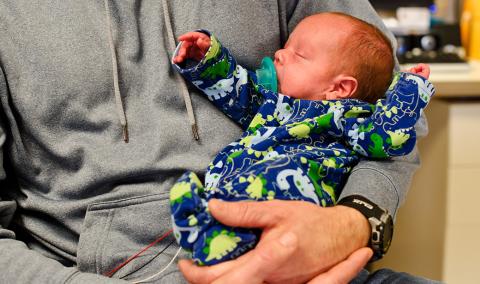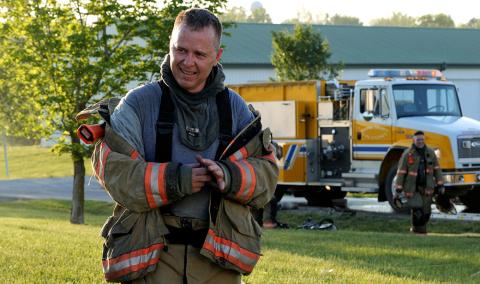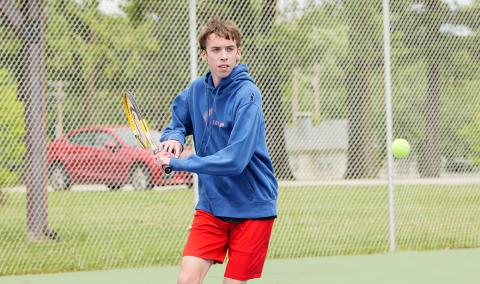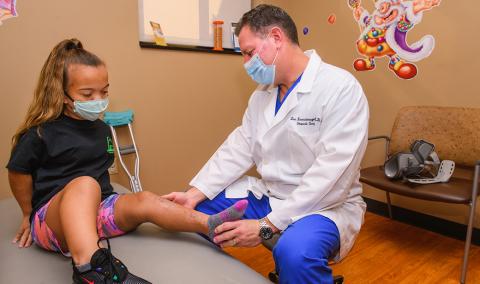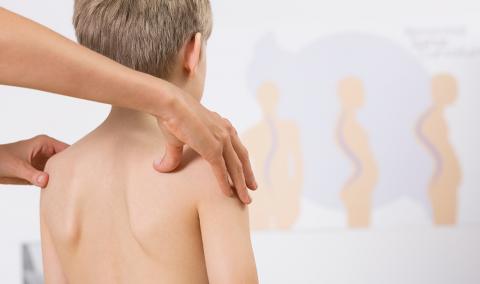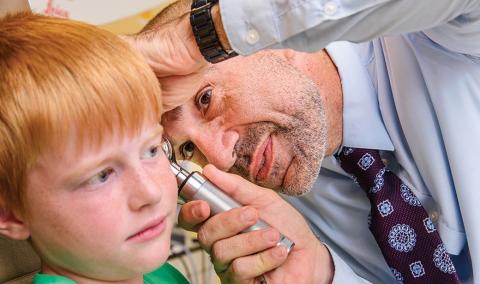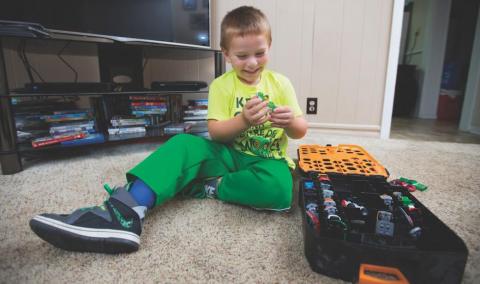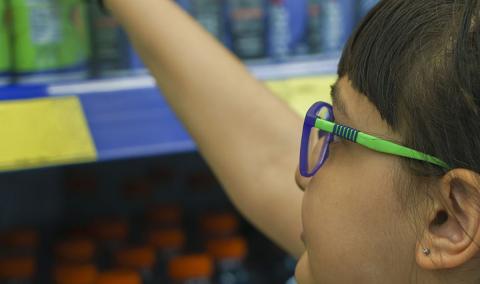Diastrophic dysplasia is a disorder of cartilage and bone development that is estimated to affect about one in 100,000 newborns. Diastrophic dysplasia occurs in all populations but appears to be particularly common in Finland. Affected individuals have short stature with very short arms and legs. Most also have early-onset joint pain (osteoarthritis) and joint deformities (contractures), which restrict movement. These joint problems often make it difficult to walk and tend to worsen with age.
If you have a child with diastrophic dysplasia, you want him or her to receive comprehensive care from a team of experts. At University of Missouri Health Care, we are the region’s experts in treating skeletal dysplasia diseases. We are actively involved with national research for treatments, and the leader of our team, Daniel Hoernschemeyer, MD, sits on the medical advisory board of the Little People of America so he can be actively involved with the issues affecting the health of skeletal dysplasia patients.
Diastrophic dysplasia CHARACTERISTICS
Additional features of diastrophic dysplasia include an inward- and upward-turning foot (clubfoot), progressive abnormal curvature of the spine and unusually positioned thumbs (hitchhiker thumbs). About half of infants with diastrophic dysplasia are born with an opening in the roof of the mouth (cleft palate). Swelling of the external ears is also common in newborns and can lead to thickened, deformed ears.
The signs and symptoms are similar to those of another skeletal disorder called atelosteogenesis type 2; however, diastrophic dysplasia tends to be less severe. Although some affected infants have breathing problems, most people with diastrophic dysplasia live into adulthood.
Diastrophic dysplasia DIAGNOSIS AND TREATMENT
The diagnosis of DTD is confirmed by molecular genetic testing. Limb-lengthening surgery should only be discussed when the patient is old enough to weigh the risks and benefits. Adaptability products can help people with PSACH do daily tasks such as hygiene, driving and reaching household items. Curvature of the spine can be treated with a brace or, less frequently, with spinal fusion surgery. Shoe lifts or inserts can address leg-length discrepancies. Surgery might be necessary to address leg alignment problems.
RESOURCES FOR FAMILIES
Click here for more resources and additional details on diastrophic dysplasia.
Related Conditions & Treatments
- Adolescent Medicine
- Pediatric Chest Wall Disorders Program
- Down Syndrome
- Emergency Care for Kids
- Feeding Tubes for Children
- Hyperbaric Oxygen Therapy
- Juvenile Diabetes
- Neonatology
- Pediatric Anesthesiology
- Pediatric Cancer
- Pectus Carinatum
- Pectus Excavatum
- Pediatric Cardiology
- Pediatric Dermatology
- Pediatric Development and Behavior
- Pediatric ENT (Ear, Nose and Throat)
- Pediatric Epilepsy
- Pediatric Eye Care
- Pediatric Gastroenterology
- Pediatric Infectious Diseases
- Pediatric Inpatient Rehabilitation
- Pediatric Nephrology
- Pediatric Neurology
- Pediatric Neurosurgery
- Pediatric Orthopaedics
- Pediatric Plastic Surgery
- Pediatric Primary Care
- Pediatric Psychiatry
- Pediatric Pulmonary Medicine
- Pediatric Sleep Medicine
- Pediatric Surgery Services
- Pediatric Surgical Services
- Pediatric Urology
- Pediatric Vascular Anomalies
- Pediatric Weight Management
- Sickle Cell Disease
- Aerodigestive Program



